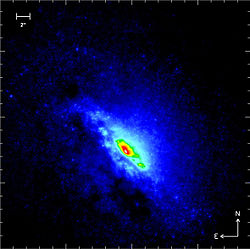Luminosity
Luminosity is the amount of power given off by an astronomical object.
Stars and other objects emit energy in the form of radiation. It is measured in joules per second, which are equal to watts. A watt is one unit of power. Just as a light bulb is measured in watts, the Sun can also be measured in watts. The sun gives off 3.846×1026 W. This amount of power is known as 1 sol, the symbol for which is [math]\displaystyle{ L_\odot }[/math].
There are other ways to describe luminosity. The most common is apparent magnitude, which is how bright an object looks to an observer on Earth. It only applies to light, that is, visible wavelengths. Apparent magnitude is contrasted with absolute magnitude, which is an object's intrinsic brightness at visible wavelengths, irrespective of distance. The apparent magnitude is the less, for objects more than 32.6 light years away.
When talking about the total power output across all wavelengths, that is called bolometric magnitude.
Luminosity Media
The Sun has an intrinsic luminosity of 3.83×1026 watts. In astronomy, this amount is equal to one solar luminosity, represented by the symbol L⊙. A star with four times the radiative power of the Sun has a luminosity of 4 L⊙.


